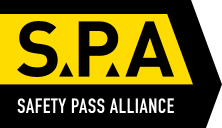Safety flaws at food business exposed at court
- Date:
- 31 March 2015
A Southampton worker suffered serious injuries when his arm was dragged into an unguarded part of a conveyor belt at a chicken hatchery business in Romsey, a court heard.
Superviser Andrew House, from Calmore, needed hospital treatment and was unable to work for several months after the incident at Faccenda Foods hatchery on 17 March 2014.
Southampton Magistrates’ Court heard the victim’s left hand was pulled into the ‘running nip’ of the conveyor belt while cleaning the area. He was unable to reach an emergency stop control and a colleague had to stop the conveyor running so Mr House could be released.
The Health and Safety Executive (HSE) investigated and prosecuted Faccenda Foods for safety failings after identifying that the dangerous nip of the belt was totally unguarded.
Following the incident, Mr House spent seven days in hospital, required two operations and needed several months off work. He now has limited use of his hand and although he has been able to return to work, still has physiotherapy to help increase his mobility.
The court was told that Faccenda Foods, a UK foods business based in Northamptonshire, had been prosecuted by HSE back in 2001 as a result of an incident involving poorly-guarded machinery.
Faccenda Foods, of Willow Road, Brackley, Northamptonshire, was fined a total of £7000 and ordered to pay £2909.25 in costs after admitting two breaches of the Provision and Use of Work Equipment Regulations 1998 and a single breach of the Management of Health and Safety at Work Regulations 1999.
After the hearing, HSE inspector Kate Clark said: “Andrew House suffered an awful injury to his hand which left him unable to use it for months. It was debilitating and traumatic.
“The fact is that it need not have happened at all. Faccenda Foods should have carried out a proper assessment of the risks involved in operating the machine. That would have identified the safeguards and controls and that were needed and the firm would have been able to put those measures in place.
“The risk to workers of becoming trapped in moving machinery is well-known in the industry and should not be under-estimated, as these incidents account for hundreds of injuries each year, and even deaths.
“If the guards that Faccenda installed after Mr House’s injury had been there at the time, it is extremely unlikely he would have become trapped.”
Notes to Editors:
1. The Health and Safety Executive is Britain’s national regulator for workplace health and safety. It aims to reduce work-related death, injury and ill health. It does so through research, information and advice; promoting training; new or revised regulations and codes of practice; and working with local authority partners by inspection, investigation and enforcement. www.hse.gov.uk[1]
2. Regulation 11(1) of the Provision and Use of Work Equipment Regulations 1998 states: Every employer shall ensure that measures are taken which are effective – (a) to prevent access to any dangerous part of machinery or to any rotating stock-bar; or (b) to stop the movement of any dangerous part of machinery or rotating stock-bar before any part of a person enters a danger zone.
3. Regulation 16(1) of the same Regulations states: Every employer shall ensure that, where appropriate, work equipment is provided with one or more readily accessible emergency stop controls unless it is not necessary by reason of the nature of the hazards and the time taken for the work equipment to come to a complete stop as a result of the action of any control provided by virtue of regulation 15(1).
4. Regulation 3(1)(a) of the Management of Health and Safety at Work Regulations 1999 states: Every employer shall make a suitable and sufficient assessment of)the risks to the health and safety of his employees to which they are exposed whilst they are at work.
5. HSE news releases are available at http://press.hse.gov.uk/



















